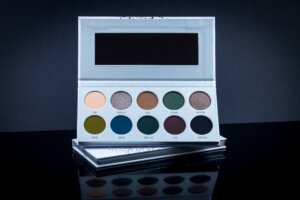Personalized Perfection

The cut crease eye makeup technique has become a popular trend, known for its ability to create depth, dimension, and drama to any eye look. However, not all cut crease styles work equally well for every eye shape. To truly enhance your eyes and flatter your unique features, it’s important to understand how to adapt the cut crease technique to your specific eye shape. In this beauty blog, we’ll explore the world of cut crease for different eye shapes, providing you with tips and tricks to create a stunning and customized cut crease look that will make your eyes truly shine.
Understanding Eye Shapes:
Before diving into the cut crease techniques, let’s familiarize ourselves with different eye shapes:
- Almond Eyes: Almond-shaped eyes have a slightly upturned outer corner and a visible lid space. This shape is considered versatile and can adapt to various makeup styles.
- Hooded Eyes: Hooded eyes have a fold of skin that partially covers the eyelid, making the lid space less visible. The cut crease technique can help create the illusion of a larger lid space.
- Round Eyes: Round eyes have a more circular shape with a visible lid space. The cut crease technique can add dimension and elongate the eye shape.
- Monolid Eyes: Monolid eyes have a flat eyelid without a visible crease. The cut crease technique can help create the illusion of a crease and add depth to the eyes.
- Upturned Eyes: Upturned eyes have a natural lift at the outer corners. The cut crease technique can accentuate this feature and create a captivating winged effect.
Cut Crease Techniques for Different Eye Shapes:
Almond Eyes
For almond eyes, the classic cut crease technique works beautifully. Apply a light shade on the entire lid, then use a medium shade to define the crease. Blend it well to create a seamless transition. Finish by applying a deeper shade on the outer corner to add depth and drama.
Hooded Eyes
With hooded eyes, the goal is to create the illusion of a larger lid space. Start by applying a matte shade slightly above the natural crease. Blend it upward to create a soft gradient. Next, apply a darker shade on the outer corner and blend it slightly above the crease to add depth. Highlight the center of the lid to bring attention to the area.
Round Eyes
To elongate and add dimension to round eyes, focus on extending the outer corner. Apply a darker shade on the outer corner and blend it outward in a gentle upward motion. Create a defined crease by using a contrasting shade slightly above the natural crease. Blend the shades seamlessly to achieve a balanced and elongated effect.
Monolid Eyes
For monolid eyes, the cut crease technique can help create the appearance of a crease. Apply a transition shade on the entire lid, then use a slightly darker shade to define the crease area. Blend it well to create a soft gradient. Apply a shimmery or metallic shade on the center of the lid to add dimension and draw attention to the area.
Upturned Eyes
To accentuate the natural lift of upturned eyes, focus on the outer corner. Apply a darker shade on the outer corner and extend it slightly upward in a winged shape. Blend it softly to maintain a seamless transition. Use a lighter shade on the inner corner and center of the lid to create contrast and enhance the uplifted effect.

Conclusion:
The cut crease technique is a versatile and transformative eye makeup method that can be customized to flatter different eye shapes. By understanding your eye shape and implementing the appropriate techniques, you can enhance your features and create stunning eye looks that truly complement your natural beauty. Whether you have almond eyes, hooded eyes, round eyes, monolid eyes, or upturned eyes, there’s a cut crease style that will bring out the best in your unique eye shape. So, experiment, practice, and embrace the power of cut crease to elevate your eye makeup game to new heights.




